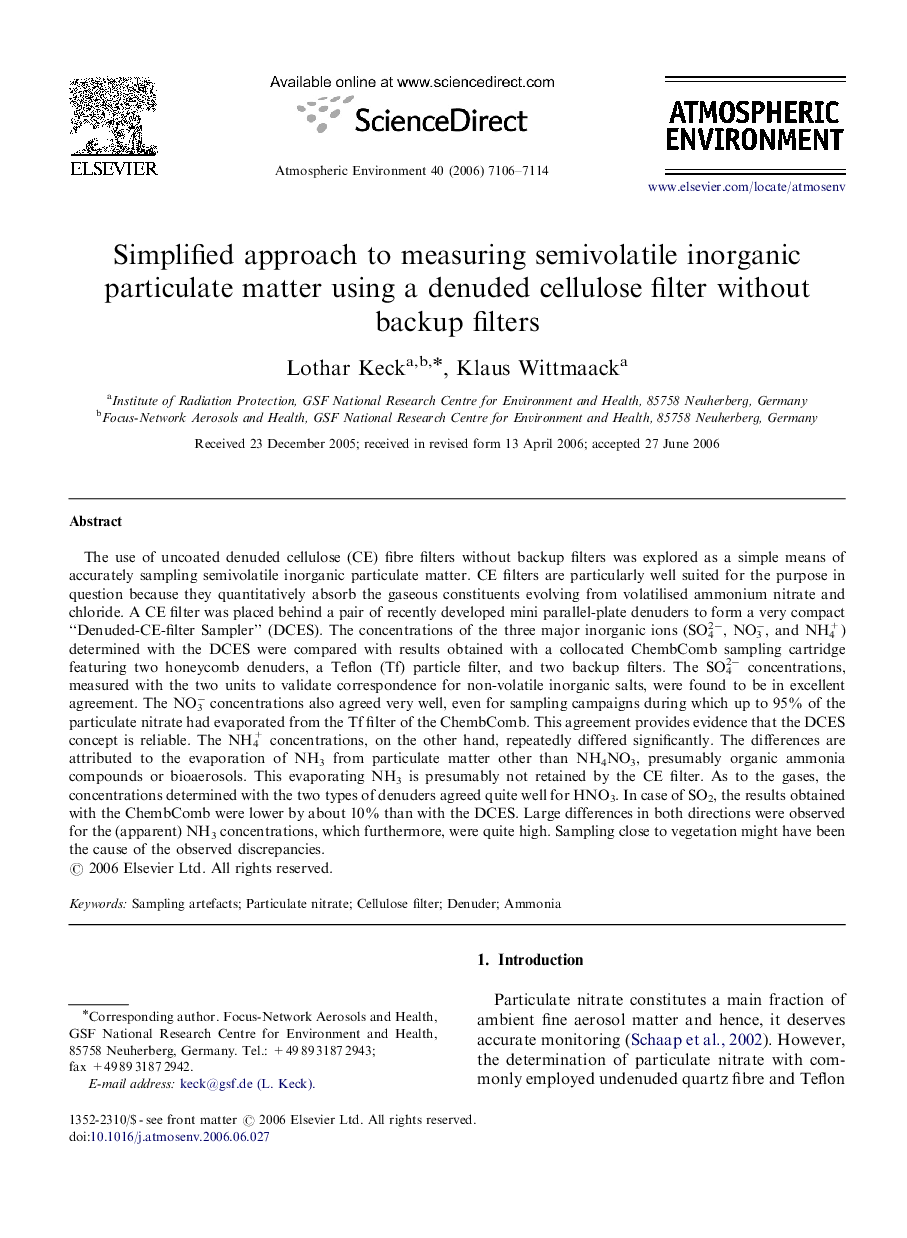| کد مقاله | کد نشریه | سال انتشار | مقاله انگلیسی | نسخه تمام متن |
|---|---|---|---|---|
| 4443759 | 1311208 | 2006 | 9 صفحه PDF | دانلود رایگان |

The use of uncoated denuded cellulose (CE) fibre filters without backup filters was explored as a simple means of accurately sampling semivolatile inorganic particulate matter. CE filters are particularly well suited for the purpose in question because they quantitatively absorb the gaseous constituents evolving from volatilised ammonium nitrate and chloride. A CE filter was placed behind a pair of recently developed mini parallel-plate denuders to form a very compact “Denuded-CE-filter Sampler” (DCES). The concentrations of the three major inorganic ions (SO42−, NO3−, and NH4+) determined with the DCES were compared with results obtained with a collocated ChembComb sampling cartridge featuring two honeycomb denuders, a Teflon (Tf) particle filter, and two backup filters. The SO42− concentrations, measured with the two units to validate correspondence for non-volatile inorganic salts, were found to be in excellent agreement. The NO3− concentrations also agreed very well, even for sampling campaigns during which up to 95% of the particulate nitrate had evaporated from the Tf filter of the ChembComb. This agreement provides evidence that the DCES concept is reliable. The NH4+ concentrations, on the other hand, repeatedly differed significantly. The differences are attributed to the evaporation of NH3 from particulate matter other than NH4NO3, presumably organic ammonia compounds or bioaerosols. This evaporating NH3 is presumably not retained by the CE filter. As to the gases, the concentrations determined with the two types of denuders agreed quite well for HNO3. In case of SO2, the results obtained with the ChembComb were lower by about 10% than with the DCES. Large differences in both directions were observed for the (apparent) NH3 concentrations, which furthermore, were quite high. Sampling close to vegetation might have been the cause of the observed discrepancies.
Journal: Atmospheric Environment - Volume 40, Issue 37, December 2006, Pages 7106–7114